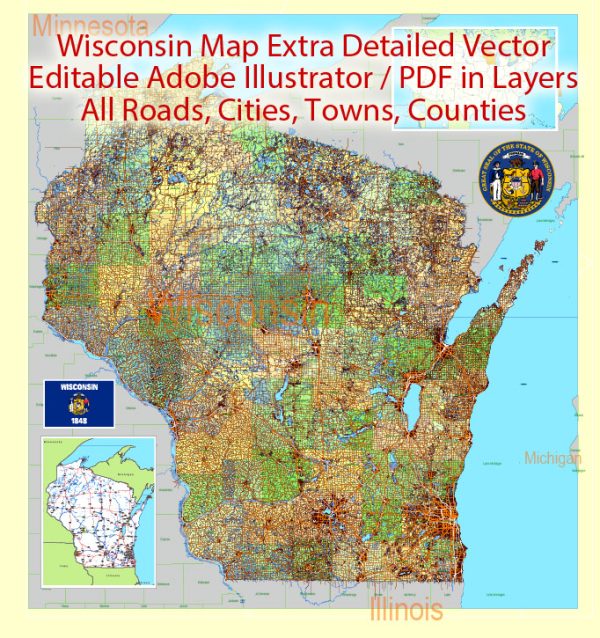Wisconsin has a well-developed transportation system that includes a mix of roadways, railways, airports, and waterways. Here’s an overview of the state’s transportation infrastructure:
- Roads and Highways: Wisconsin has an extensive network of roads and highways. The Wisconsin Department of Transportation (WisDOT) maintains and manages the state’s road system. The state is known for its scenic highways, including the Great River Road along the Mississippi River and the Door County Coastal Byway. The Interstate Highway System also plays a significant role in Wisconsin, with major routes such as I-94, I-43, and I-90/I-94 connecting the state to the rest of the country.
- Public Transit: Several cities in Wisconsin have public transit systems, including Milwaukee County Transit System (MCTS), Madison Metro, and others. These systems provide bus services to urban and suburban areas.
- Railroads: Wisconsin has an extensive railroad network. Freight railroads, such as Union Pacific, Canadian Pacific, and BNSF, operate throughout the state, facilitating the transportation of goods. Amtrak, the national passenger rail service, provides intercity passenger rail connections in Wisconsin with routes like the Hiawatha Service between Milwaukee and Chicago and the Empire Builder from Chicago to the Pacific Northwest.
- Airports: The state has several airports, with the General Mitchell International Airport in Milwaukee being the largest and busiest. Other significant airports include Dane County Regional Airport in Madison, Austin Straubel International Airport in Green Bay, and Appleton International Airport.
- Ports and Waterways: Wisconsin’s proximity to the Great Lakes and the Mississippi River makes water transportation an essential part of the state’s economy. The Port of Milwaukee is a major Great Lakes port for the shipping of goods, and the Mississippi River allows for barge traffic, primarily for agricultural products.
- Biking and Pedestrian Infrastructure: Many Wisconsin cities, especially Madison and Milwaukee, have invested in bike lanes and pedestrian-friendly infrastructure. The state offers numerous biking trails and paths, like the Elroy-Sparta State Trail and the Glacial Drumlin State Trail.
- Winter Transportation: In the winter months, Wisconsin is known for its snow and ice. The state has a well-maintained system of snowplows and salt trucks to keep roads clear, and winter sports enthusiasts often use snowmobiles for transportation in rural areas.
- Ferries: Some regions of Wisconsin, like the Door Peninsula, use ferries to connect islands and provide an alternative means of transportation. The Washington Island Ferry Line, for example, connects the Door Peninsula to Washington Island.
- Transportation Agencies: The Wisconsin Department of Transportation (WisDOT) is responsible for overseeing and maintaining the state’s transportation infrastructure. They also provide information and resources for travelers and commuters.
Overall, Wisconsin’s transportation system is designed to accommodate the state’s urban centers, rural areas, and natural attractions, making it an essential component of the state’s economy and quality of life.


 Author: Kirill Shrayber, Ph.D.
Author: Kirill Shrayber, Ph.D.